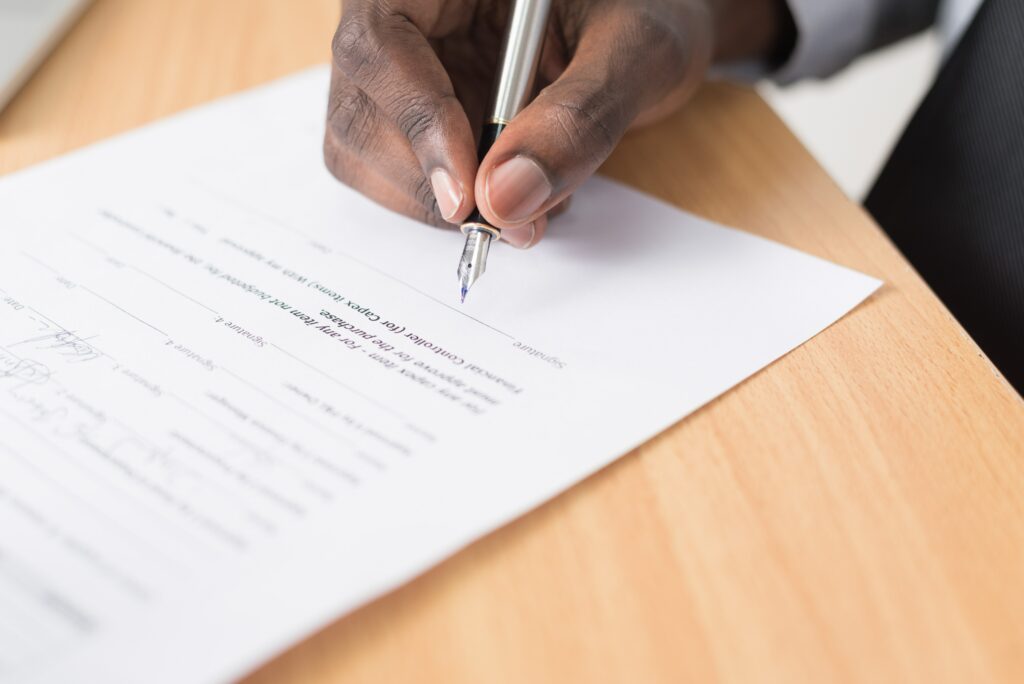The new standard rental lease agreement in Ontario is designed to provide landlords and tenants with a clear and comprehensive document that outlines their rights and responsibilities. This agreement is mandatory for all new leases signed on or after March 1, 2021, and replaces the previous standard lease agreement used in the province.
Once the landlord enters a tenancy with a tenant, they need to use this basic rental agreement or residential lease. If you want to know how to get out of a rental lease agreement, how to make a lease agreement for rental property, and other things, make sure to check the blog.
Today, we’ll go through the most frequently asked questions regarding rental lease agreements in Ontario.
Information About Standard Lease
A new mandatory rental lease agreement, last revised in October 2022, has been introduced for most residential tenancies. The updated agreement is designed to promote fair and transparent leasing practices, and protect the rights of tenants. As part of property management, the standard lease agreement in Ontario outlines the rights and responsibilities of both landlords and tenants.
The standard lease agreement in Ontario includes several key sections that outline the rights and responsibilities of both landlords and tenants. Some of the key elements that are typically included in a standard rental lease agreement include:
- Parties to the agreement: This part is about the names of the landlords and tenants.
- Rental unit: This part is about the description of the rental unit and the address of the rental property (location and the number of parking areas if applicable).
- Contact information: This section covers the landlord’s address where they can get the notices, as well as the agreement of the tenant and landlord to get notices by email. And this section also includes additional contact information.
- Term of tenancy agreement: This section includes the move-in date and term of the tenancy.
- Rent: This section outlines total rent, including base rent, additional charges, and future rent increases. It also specifies rent payment terms, methods and administrative charges.
- Services and utilities: This section lists additional services and who is responsible for utilities. It also mentions if any extra services can be added with a rent increase.
- Rent discounts: This covers rent discounts and the requirement to pay full rent after the discount ends (including lawful increases).
- Rent deposit: This outlines rent deposit requirements, including limits on amount and use.
- Key deposit: This covers key deposit requirements, including limits on amount and use.
- Smoking: This covers smoking rules in the rental unit.
- Tenants insurance: This section includes liability insurance requirements.
- Changes to the rental unit: This section covers decorative item installation and limitations on changes to the rental unit.
- Maintenance and repairs: This section states that the landlord is responsible for maintaining the rental unit and property, while the tenant must take care of any damages caused by them or their guests. It also states that the tenant must clean the unit unless otherwise agreed upon.
- Assignment and subletting: This part states that the tenant must always get the permission of the landlord regarding assigning or subletting the rental unit to another person. The landlord cannot unreasonably withhold the agreement.
- Additional terms: This section explains that the landlord and tenant can agree on additional rules or terms for the tenancy, which must be attached to the lease once agreed.
- Changes to this agreement: This section states that if there are any changes to the agreement, they must be agreed upon by both parties in a document.
- Signatures: This section confirms that all parties listed in the agreement have agreed to its terms and must sign the agreement.
You can find more detailed information regarding each of the rights in Ontario’s rental lease agreement.
FAQs of Basic Rental Lease Agreements
Is a rental agreement the same as a lease?
No, there is a subtle difference.
What is the difference between a lease and a rental agreement?
A lease agreement is a long-term contract between a landlord and tenant for the rental of property, typically lasting 6-12 months. A rental agreement is a shorter, more flexible agreement that outlines the terms of renting a property, usually on a month-to-month basis.
Is a month-to-month rental agreement a lease?
A month-to-month lease is a type of rental agreement that renews every month and can be terminated by either the landlord or tenant with proper notice.
How to write a simple rental lease agreement or a standard lease agreement?
Follow the above-mentioned sections to understand what must be included in the agreement.
Can you break the rental lease agreement?
A tenant who signed a lease for a specific period cannot typically break the lease unless:
- There’s an agreement with the landlord to do so.
- The tenant is allowed to assign the rental property to someone else.
- The tenant needs to move due to abuse or domestic violence.
The tenant has the option to terminate the tenancy by providing the landlord with proper notice, using the designated form from the Landlord and Tenant Board.
How do you get a rental lease agreement?
To get a rental lease agreement, you can follow these steps:
- Determine the terms of the lease agreement.
- Look for templates online or use lease agreement software to create a custom agreement.
- Have both the landlord and tenant sign and date the agreement.
- Make copies for each party to keep for their records.
Note: It’s recommended to have a lawyer review the agreement before it’s signed to ensure it’s legally binding and in compliance with local laws.
Can a landlord break a rental lease agreement early?
Under property lease management, a landlord can only terminate a tenancy in specific circumstances as defined by the law. The proper rules and procedures must be followed, including using the correct form (available on the Landlord and Tenant Board’s website) and providing adequate notice, to end the tenancy. If notice is given, the tenant is not obligated to vacate the property. A landlord can give notice for reasons related to the tenant’s conduct, such as non-payment of rent, damage to the property, or disturbing others’ peaceful enjoyment of the premises.
How can you negotiate a rental lease agreement?
- Research market rates for similar properties in the area.
- Determine your budget and the terms you are willing to agree to.
- Start a conversation with the landlord about your desired terms and listen to their counteroffer.
- Consider compromising on certain terms to reach an agreement that works for both parties.
- Get the agreement in writing and review all terms before signing.
- How can you make a rental lease agreement?
- Obtain personal details of landlord and tenant.
- Specify details regarding the rental property.
- Take into account utilities and services offered.
- Familiarize yourself with the lease terms.
- Establish the monthly rent payment and its due date.
- Have clear policies.
- Inform about additional charges.
- Assess the rights and responsibilities of both parties.
These were all the details you need to know about the rental lease agreement. Make sure to double-check them and follow the terms.





